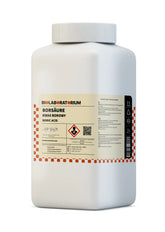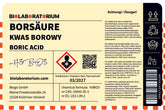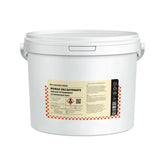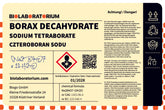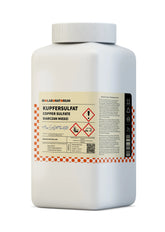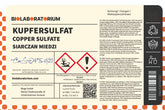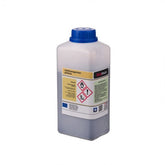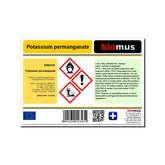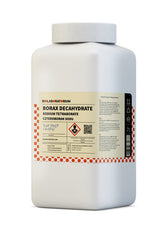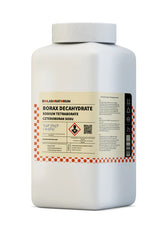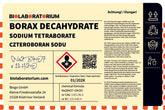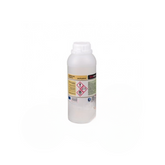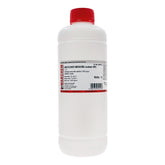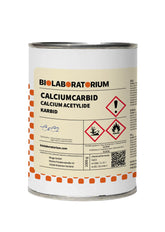Nitric acid – properties, applications, and safety in the chemical industry
Nitric acid (HNO3) is one of the most important chemicals in industrial production. It has a wide range of uses in the chemical industry and is indispensable in modern economic life. In this blog post, we take a closer look at the properties, applications, and safety aspects of nitric acid.
The chemical properties of nitric acid
Nitric acid is a colorless to yellowish, corrosive liquid with a pungent odor. It is a strong acid with a pH of about 0.5 and belongs to the oxidizing acids. Its density is about 1.5 g/cm³. Nitric acid is highly soluble in water and forms a strongly exothermic reaction.
The chemical formula of nitric acid is HNO3. It consists of one hydrogen atom (H), one nitrogen atom (N), and three oxygen atoms (O). Nitric acid is an oxoacid because the nitrogen atom is connected to one oxygen atom by a double bond.
Nitric acid is a very reactive substance. It can react violently with many organic and inorganic compounds. Explosive or toxic gases can be produced in the process. For this reason, great caution must be exercised when handling nitric acid.
Applications of nitric acid in industry
Nitric acid is indispensable in the chemical industry. It is used in numerous production processes:
Fertilizer production
A main application of nitric acid is the production of nitrogen fertilizers. By reacting with ammonia, ammonium nitrate is formed, which is used as a fertilizer.
Explosives and blasting agents
Nitric acid also serves as a starting material for the production of explosives such as nitroglycerin, dynamite, or trinitrotoluene (TNT). These substances are used in the defense industry, mining, and construction.
Dyes and pharmaceuticals
Nitric acid also plays an important role in the production of organic dyes and some pharmaceuticals.
Metal processing
In metal processing, nitric acid is used for pickling, etching, and polishing metals. It removes oxide layers and impurities from the metal surface.
Cleaning agents and degreasers
Nitric acid is also used in cleaning and degreasing agents. It is an effective means of removing stubborn dirt.
Chemical syntheses
Furthermore, nitric acid serves as an important reagent in many chemical syntheses. It is used, for example, in the production of plastics, pharmaceuticals, and other organic compounds.
Safety aspects when handling nitric acid
Due to its strongly oxidizing and corrosive properties, nitric acid is a dangerous substance. Therefore, strict safety measures must be observed when handling it:
Personal protective equipment
When handling nitric acid, wearing appropriate protective equipment is essential. This includes acid- and chemical-resistant protective suits, gloves, safety goggles, and respiratory masks.
Storage and Transport
Nitric acid must be stored in tightly sealed, shatterproof containers. Transport must comply with applicable hazardous materials regulations.
Disposal
Nitric acid residues and waste must be disposed of properly. They must not be released into the environment.
First Aid
In case of contact with nitric acid, first aid measures must be taken immediately. Affected body parts must be rinsed immediately with plenty of water.
Fire protection
Nitric acid itself is not flammable but can cause violent reactions when in contact with flammable materials. Therefore, special fire protection measures must be taken in the vicinity of nitric acid.
Conclusion
Nitric acid is one of the most important chemicals in industrial production. It has a wide range of uses, for example in the fertilizer, explosives, and metal processing industries. Due to its hazardous nature, strict safety measures must be observed when handling nitric acid. Only in this way can a safe and responsible use of this substance be ensured.

